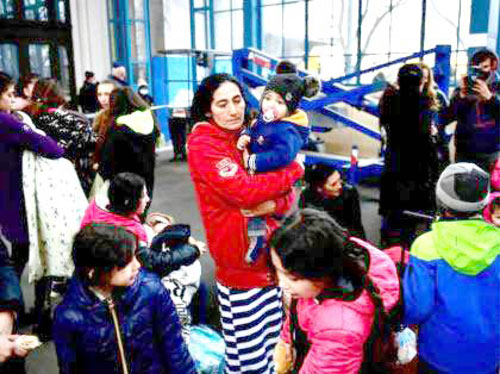More than three million people have fled Ukraine since Russia invaded on February 24, nearly half of them minors, with a child becoming a refugee every second, the UN said.
“We have now reached the three-million mark in terms of movement of people out of Ukraine,” Paul Dillon, a spokesman for the United Nations migration agency (IOM), told reporters.
Less than three weeks into the invasion, “three million lives uprooted. Three million women, children and vulnerable people separated from their loved ones,” IOM chief Antonio Vitorino said in a tweet.
“We need an immediate cessation of hostilities.” The UN refugee agency, UNHCR, meanwhile put the total number of refugees to date at 2.97 million.
More than half of them, 1.8 million, have fled to Poland, it said.
The UN children’s agency meanwhile said that more than 1.4 million of those who have fled are minors.
“On average, every day over the last 20 days in Ukraine, more than 70,000 children have become refugees,” UNICEF spokesman James Elder told reporters in Geneva.
That amounts to around 55 every minute, “so almost one per second,” he said.
“This crisis in terms of speed and scale is unprecedented since World War II, and is showing no signs of slowing down.” “Like all children driven from their homes by war and conflicts, Ukrainian children arriving in those border countries are at significant risk of family separation, of violence, of sexual exploitation and trafficking,” Elder warned.
“They’re in desperate need of safety, stability and child protection services, especially those who are unaccompanied or have been separated from their families,” he said. Elder, who had just returned to Geneva after spending two weeks in Lviv in western Ukraine, described the immense suffering behind the numbers.
“Each one of those children by and large had their father explain to them that their father was staying behind,” he said.
He said the children he saw “didn’t cry. That’s not well-behaved children, that’s a sign of trauma.” Inside Ukraine, the situation is bleaker still.
Elder described heartbreaking scenes of paediatricians trying to manage the large numbers of children arriving with wounds of war.
“The doctors use stickers to prioritise treatment,” he said. “A green sticker on a child means injured but we leave them, yellow sticker on a child means needs attention, a red sticker on a child means critical attention immediately,” he said.
“And when the paediatricians are forced to put a black sticker on a child, it means the child is alive, but do not give attention, because we don’t have the resources and that child will die.”—APP










